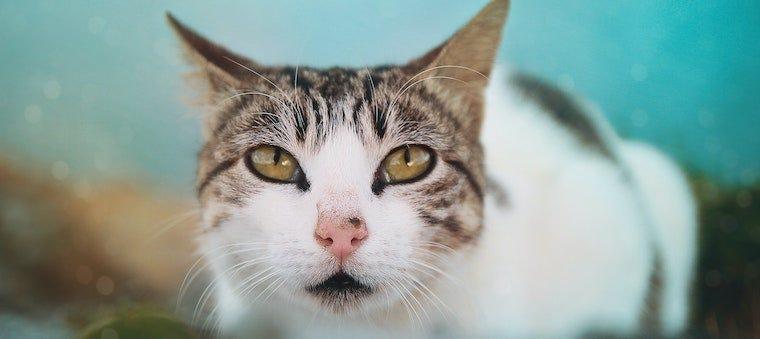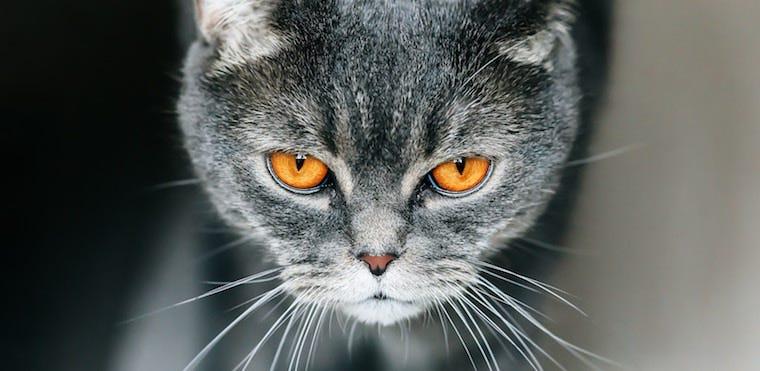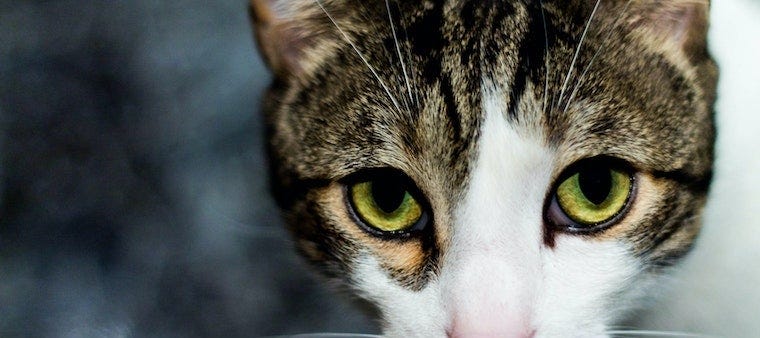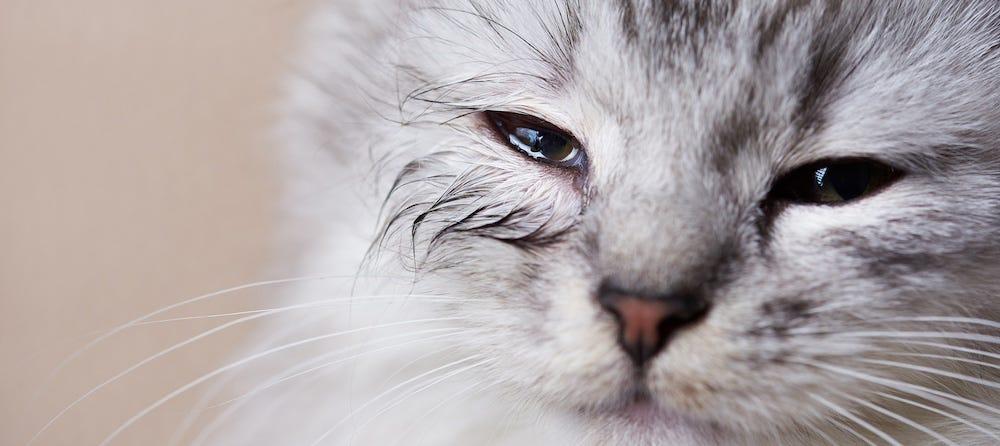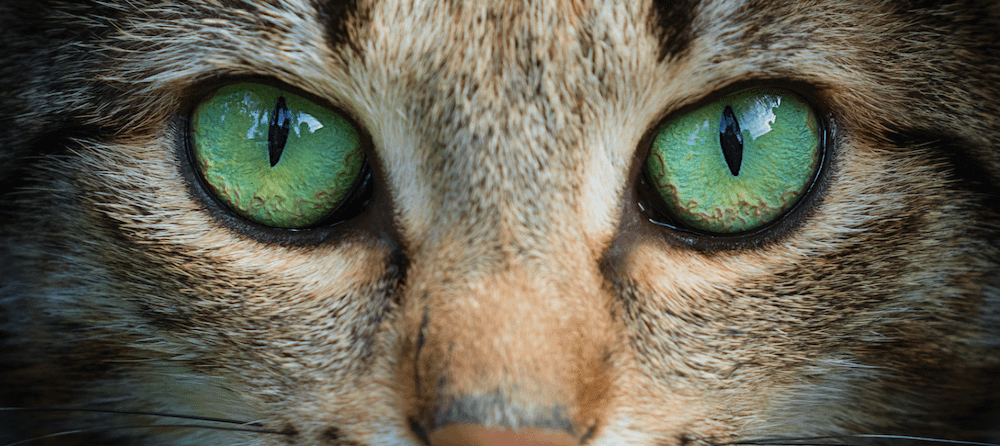Wondering what the world looks like through your cat's eyes? As cats peer out of the window, do they see the same shades that you do? Or do they only see in black and white?
Many pet parents are curious about their feline family, and it’s common to wonder about what colors cats can see. With extensive research on the topic, we know that cats do, in fact, see colors, but not in the same way that humans do.
So, what do cats see? Their vision is not as vivid and doesn’t extend as far as the eyesight of humans—but their sight still outperforms ours due to their superior ability to see in the dark.

Are cats color blind?
For humans and cats alike, the retina of the eye contains cones and rods. These are two photoreceptor cells that impact how you or your pet sees the world. Cones make it possible for the brain to register colors and provide the sharpness, or visual acuity, through which cats are able to evaluate both distance and speed effectively: this contributes to cats’ excellent hunting ability. Whereas rods are the reason why we have the ability to see in dim lighting. Have you ever heard that cats can see in the dark? Well, that’s a myth—they cannot see in the dark, but cats can see 6 times better in dim light than people. Despite all of the research and scientific advances, the truth is that it is uncertain whether cats can see colors. Here we will discuss what is generally accepted as truth in regard to cat vision.
Cats have been found to have three types of cones that have peak absorption at 450 nanometers (nm) (blue), 500 nm (cyan or greenish blue), and 550 nm (green) wavelengths. While cats do have these cones and can therefore appreciate these colors, humans can perceive colors more vividly because we have 10 times the number of cones that cats have. Some scientists also believe that cats can also see yellow, like dogs!
So, do cats see color or are cats color blind? It turns out that cats are not color blind. They can see color, just not as vividly as their human companions, and with some pretty specific limitations on what colors are available for their appreciation.
What colors can cats see best?
When exploring what colors cats see best, it is believed that cats are able to easily detect blue hues.
More specifically, blue-violet hues are easiest for our felines to detect, but the yellow-green wavelengths of light are also easy to see.
Unfortunately, cats are not able to see red-orange hues. You’re likely wondering how your cat cannot detect red hues even though a favorite play toy is the bright red laser pointer. Your cat is detecting the rapid movement of the light and not the color itself. Super cool, right?
While their world isn’t entirely black and white, it is dimmer in color than the world humans see due to the lesser amount of cones to perceive the spectrum of vivid colors.
How far can cats see?
Determining how far cats can see ties into visual acuity. A “normal” human has a visual acuity of 20/20: this means that said person can see what an average individual can see when they are standing 20 feet away. Applying this to felines, the average cat is between 20/100 and 20/200. How does this translate? Succinctly, cats are nearsighted. While most people are able to see 100 to 200 feet away, cats can only see up to 20 feet in front of them. This contributes to their instinctual predatory style of ambushing—which is why cats are so adept at pouncing on their prey (even if said “prey” is a cat toy!).
Don’t be concerned about your cat's “poor” vision: differentiating the details of an object is typically not significant for a cat’s everyday life.

Do cats have night vision?
As previously stated, cats easily outperform humans with their ability to see in poorly lit situations. Remember, rods make it possible for us to make out objects in dim lighting. Cats have up to 8 times more rods than people. This alone allows your cat to detect motion more accurately in the dark and see better when the lighting is dim.
But their ability to see in the dark doesn’t stop there. Additionally, cats also have a thin reflective layer called the tapetum lucidum, found behind the retina, that serves to magnify incoming light. It is also the bright greenish glint that you see when you look at your cat's eyes in the dark. The tapetum lucidum reflects light outward, which creates better vision in dim settings. While this unique feature has little benefit to them in the light, it is extremely helpful at night. So, can cats see in total darkness? No, but they require only a small fraction of the amount of light that humans need to see.
How can I support my cat’s vision?
Both indoors and outdoors, your cat depends on their vision to survive and lead an enriched life. Your indoor cat might not have to hunt for food to survive, but they will still need to navigate their surroundings.
Cats with vision impairments are typically easily startled, but who can blame them? Keeping your cat's eyesight stimulated while ensuring they have a healthy, balanced meal selection is a great way to support your cat's vision.
Vision nutrition
Being intentional about your cat's nutrition is a great way to improve their vision health. Your cat requires taurine, which is an amino acid, or a building block of protein, that typically has to be added into their diet as a supplement.
From wildlife to cooked fish, chicken, and other meats, taurine can be found in many carnivorous foods. Cats are different in that they cannot synthesize taurine from other amino acids, so it is crucial that pet owners are intentional in making sure it is in their feline’s diet. If this essential nutrient is missing from your cat’s diet, the cones in your pet’s eyes can start to deteriorate. If your cat experiences a taurine deficiency for more than 20 weeks, it is possible that your pet can lose their eyesight due to a lack of nutrients.
So, nutrition is key. Additionally, other vitamins are essential for vision nutrition and the general health of your cat. For example, vitamin A is required for healthy eyes, along with Omega-3 fatty acids and antioxidants. Cat food with an AAFCO statement is guaranteed to include these essential nutrients.
Sight exercise for cats
Keeping your cats stimulated is another great way to ensure vision health. After all, exercise for cats is incredibly important. You can use fun vision exercises for cats because your pet will just think it’s playtime. Engage your feline in activities like reflex games, cat toys, or a laser pointer!
While we have learned that cats cannot see the bright red color of laser toys, we do know that the stimulation a moving light provides can help your cat’s eyes stay engaged. Not only does this type of exercise help to strengthen your cat’s vision, but it’s also great for their overall health.
Making sure your cat leads an active life will help to reduce overall stress levels. In turn, this will result in a healthier and happier feline!
Regular eye cleaning
Caring for your cat’s eyes is important. That’s why you should always practice regular eye cleaning. Your cat spends hours grooming themselves every day, but there are certain parts that they just can’t reach on their own. Their eyes are one of those areas.
It is normal for cats to have some eye discharge. This runny liquid can cause your cat's eyes to get a little brown or crusty. But there’s no need to worry! There are two main methods of cleaning your cat’s eyes that have proven to be very effective.
The first way of maintaining regular eye cleaning for your cat is by using a warm washcloth. Start by sterilizing a soft washcloth and dipping the corner of it into clean, warm water. Gently move the washcloth over the visible eye discharge. Starting from the inside corner of the eye, wipe outward, and repeat as necessary.
The second method is similar, but instead of a washcloth, you will use cotton balls. Start by taking a cotton ball and dipping it into warm water. Following the method above, begin gently removing the eye discharge.
However, instead of using the same cotton ball over and over again, use more than one cotton ball to clean your cat’s eyes. Use at least one cotton ball for each eye. This will ensure that you prevent transferring diseases from one eye to the other.
Annual vet exams
It’s important for your veterinarian to regularly check your cat's eyes during annual exams. The vet will look for signs of trouble, like pupil enlargement, redness, cloudiness, or unusual discharge.
Annual checkups will help you stay on top of any signs of potential vision loss. Plus, these exams will also help you catch issues early and seek treatment right away. While some vision loss can be sudden, other visual loss is gradual. Knowing the underlying issues will guide you and help you understand how to properly support your cat’s vision.
Keeping your cat’s vision health in mind
While you might still be wondering what color cats see, you should now know their worlds are just as beautiful as ours. They just get to experience the world a little differently.
Cats are majestic creatures full of quirks, and their vision differences are not a hindrance. Instead, they are just equipped with accommodations that help them thrive and survive. Being able to detect slight movements in dim lighting is a great advantage to cats, especially since they are natural hunters.
Finding products that work well with your cat's eye functioning is so important. A covered litter box, such as a self-cleaning litter box like Litter-Robot, offers the perfect amount of privacy when nature calls. And the darkened canopy is of no worry to them. They are able to see with ease!
When you are shopping for a new toy, remember to select toys that are blue or purple instead of red. With the knowledge you have learned today, you can start to imagine what it is like to see the world through your cat's eyes and make decisions based on these facts.
Sources:
- Eye Structure and Function in Cats
- Vision in Animals - What do Dogs and Cats See?
- Vision in the Animal Kingdom
- VCA Hospitals
Cover photo by Aziz Acharki on Unsplash

